7 Heritage
Posted by Christine on Sep 3, 2014 in Ireland | 3 comments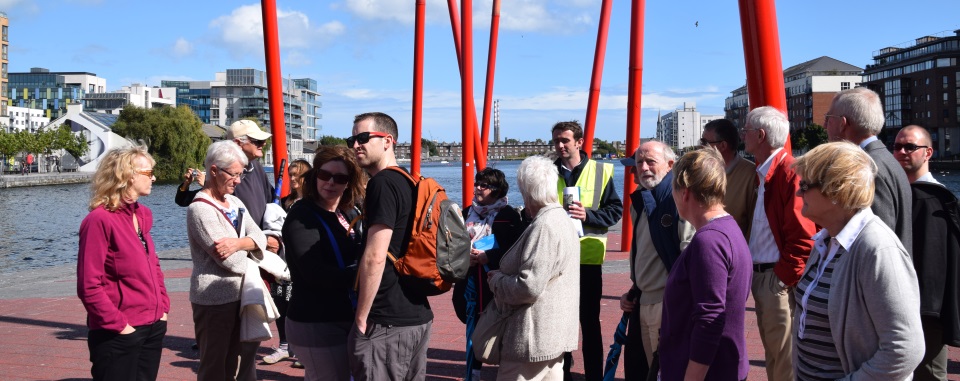
Last week I spent a good part of each day attending lectures, exhibitions, walking tours, and open houses that were part of a special event in the Republic of Ireland, National Heritage Week. From August 23-31, the entire country celebrated its heritage by inviting the public inside buildings and institutions—some of which are not normally open to the public—to learn more about history, culture, and tradition broadly defined.
That complex relationship with the past seems to have inspired a keen desire for learning more about heritage. I am constantly impressed not only with the high level of education in Ireland, but also with the hunger for knowledge and culture and the enthusiastic pursuit across all walks of life of what in the US we call “lifelong learning.” Many of the events I attended last week were booked to capacity, and those with no booking required were also packed. Attendees included lots of retired people, of course, but also a surprising number of younger people and children; at the lunchtime lectures there were plenty of attendees clearly on their lunch breaks. Anything to do with the history of Ireland’s struggle for independence was especially likely to be mobbed, as one organizer told me when she had to turn down my booking request for a walking tour related to the 1916 Easter Rising. In 2013 Heritage Week attracted 400,000 visitors, and more were expected this year. In a country of four and half million, that’s pretty amazing.
A 300-page booklet and numerous flyers and poster announced the schedule of events. This brief sample only begins to suggest the range of offerings.
Kildare and The Great War 1914-1918 (Maynooth Community Library)
Guided Bat Walk (NPWS Coole Park)
The Mannion Clan of County Galway: Warriors, Chieftains, and Kings (Skehana and District Heritage Group)
Birdbox and Owl Basket Building Workshop (Friends of Merlin Woods)
Tour of Grangegorman Military Cemetery (Office of Public Works)
How Bull Island Was Formed 200 Years Ago (Dublin City Council)
The Rise and Demise of the Dublin Cattle Market (Dublin City Public Libraries)
The Village Creamery Exhibition (Barrowvale Local History Group)
‘Our School’, A History of St. Paul’s School by Our Students (Mountmellick Historical Society)
Medieval Brewing Demonstration (Office of Public Works)
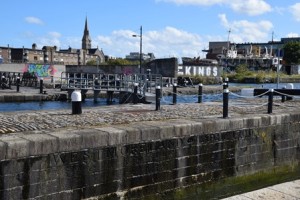
On a walking tour of the Grand Canal Dock, our guide told us the history of the system of locks, completed in 1796.
At the Dublin events on my calendar, I met many local people who were taking the time “to learn something” or to connect the history they learned in school to real places and artifacts. On a two hour walking tour of the Grand Canal Dock sponsored by Waterways Ireland, we explored the dock, its locks and adjacent riverfront, listening to our guide’s compelling blend of political, industrial, and natural history spiced with anecdotes and ironies. As he spoke, the modern and historic structures in this very recently developed area took on new meaning. The brand new five-star Marker Hotel at Grand Canal Square, he told us, sits on a location formerly called “Misery Hill,” where bodies of executed criminals were displayed as a warning to others and left to rot in the open air. Misery Hill is supposed to be the origin of the often used expression “I wouldn’t touch that with a forty-foot [also “ten-foot”] pole: lepers were brought here by minders ringing a bell and holding out a pole to keep others from coming too close. “I’ve lived here all my life,” said one of my fellow explorers on hearing the story, “and I never knew that.”
Reflecting the broad audience they attracted, the events of the week were offered with the guidance of both professionals and amateurs. One of my favorites was a fascinating talk “Going to the Pictures: 100 Years of Dublin Cinema,” in which Professor Denis Condon examined the boom in movie theater building and cinema attendance just before World War I and the socioeconomic make-up of the audiences. He has written a book on this subject. On another day, Ron and I attended a slideshow and talk called “Ringsend as it Was” given by Brian Siggins, a local amateur historian and member of the Old Dublin Society. The quirky slides—many of them taken from books or from family collections—depicted life in Ringsend over the last two centuries, including its industrial, religious, and sports history. In this community event held in a community library, audience members helped the presenter by calling out the names of people in the photographs they recognized and telling stories about the people or moments from history.
Many events allowed visitors to see behind the scenes, to go where they can’t normally go. On Saturday we I spent the afternoon in Merrion Square, an elegant Georgian garden square whose eighteenth-century mansions once housed the rich and famous. Now all of the buildings are used by law firms, corporations, and non-profits like the Goethe-Institut, the Irish Architectural Foundation, the Central Catholic Library, the Irish Traditional Music Archive, and several American universities. Though you might have business with one or another of these organizations, it’s rare to be able to explore the magnificent buildings that house them.
At number 49, for example, home to the National University of Ireland’s governing body, we got to see the extraordinary Italianate landscapes painted as murals in the main reception rooms; these magnificent oil paintings were finished by 1820, covered over by successive generations, and rediscovered and restored starting in 1949. At the office of the Royal Society of Antiquaries, a costumed researcher showed us items found at the site that reveal how life was lived in the eighteenth and nineteenth centuries. In every house we visited, the elegantly proportioned rooms, the large windows looking out onto Merrion Square Garden, the symmetry of the layout, and details like the ornate plasterwork and cantilevered staircases made a powerful statement about the Georgian aesthetic, something that would be hard to glean just from reading about the era.
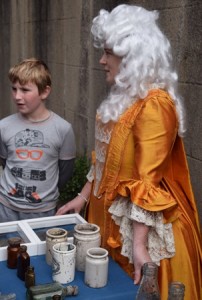
A researcher from the Royal Society of Antiquaries talks about how items found on the site illustrate daily life in the 18th and 19th centuries.
From the looks of it, attendance at this year’s Heritage Week must have beaten last year’s record, and enthusiasm for dissecting the historical, cultural, and natural heritage of Ireland ran high. I was grateful for the chance to learn so much in a short space of time and for the strong sense of community these events fostered, which even embraced me. I wonder if it would ever be possible to do something like this at home—in Decatur, Atlanta, or Georgia, or even as a national celebration. Would our diverse communities and current culture wars be able to stand such intermingling? I don’t think that the craving for knowledge is nearly as widespread in the US as it is here.
I loved my crash course in Irish heritage, but one of my questions remained unanswered. In the last half century, Ireland has seen an influx of immigration, particularly from Poland and Nigeria, but from other countries in Eastern Europe and Africa as well. I didn’t see a single entry in the Heritage Week book concerning this aspect of Irish heritage. I wonder when that past will be “past enough” to be “Irish enough”?

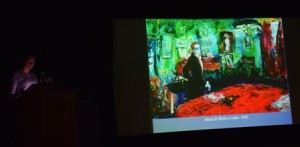
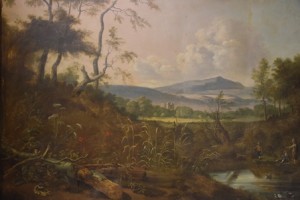
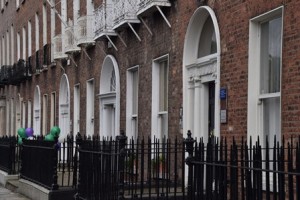
Have loved reading your blog—it’s riveting!
Thanks Donna. I’m having fun with it.
This entry struck a chord with me, particularly your reflection on the lack of a “craving for knowledge” in the US, which resonates so profoundly of late, as does your final question. -k